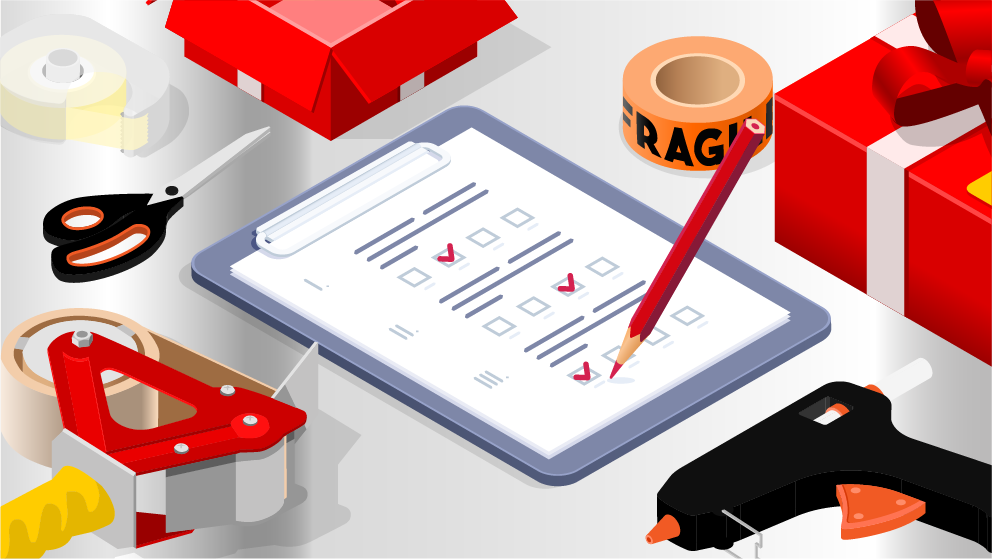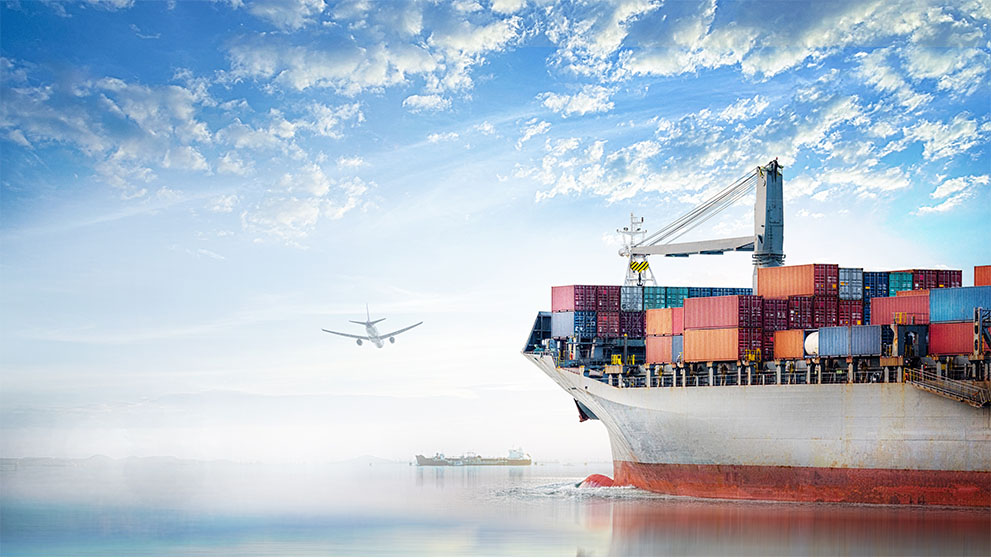In Early 2020, the world faced the worst pandemic in a century. Despite this, DHL's Global Connectedness Index found that "trade in goods has surged to well above pre-pandemic levels, lvels, powerfullt supporting the global recovery even as a capacity challenges and trade tensions persist."
So, with global e-commerce booming and consumers increasingly expecting their orders faster and cheaper, which logistics and delivery innovations are arising to meet the demand? Read on for the trends we expect to shape the industry in 2022.
Agile supply chains and 5PL Logistics Solutions
The onset of the pandemic put unprecedented pressures on global supply chains, and they’ve struggled to bounce back. This year, shortages of shipping containers, workers and raw materials as well as tightened border controls and global inflation caused enormous disruption to global trade, with backlogs and delays at key transit ports across the world.
The bad news is that these frictions are expected to continue into 2022.
Last month, America’s Secretary of Commerce Gina Raimondo warned that US supply chains will take “some number of months” to stabilize next year, with “continuous but slow improvement, and I think [we’ll be] well into 2022 before it’s back to normal”1. Such forecasts have been projected for markets across the world2.
This means the need for businesses to run agile and flexible supply chains that can adapt to market disruptions in real-time has never been more important – especially true for e-commerce businesses. After all, their customers don’t care about wider supply chain issues; they just want their orders on time and will be reluctant to return to brands that don’t deliver.
That’s where outsourcing logistics to a Fifth-Party Logistics (5PL) partner – such as DHL – can be an invaluable decision for e-commerce businesses. As supply chains become increasingly complex, the 5PL model has emerged to meet the demands. A 5PL partner will handle all the logistical needs of a client, by first identifying their exact requirements, then by planning, executing and managing the entire solution. 5PL partners have the size and experience to source and manage other suppliers along the supply chain, and leverage the latest technologies to ensure every touchpoint is optimized. In short, 5PLs are an all-in-one solution able to meet all logistics needs and ensure everything runs on time. In 2022, with supply chains facing continued disruptions, the role of 5PLs will be more important than ever.
Elastic logistics & AI
E-commerce is all about supply and demand, but sometimes this can be unpredictable. A new consumer trend that sends a certain product flying off the (online) shelves may leave businesses overwhelmed. This is where elastic logistics prove valuable – logistics with the flexibility to quickly expand or shrink to meet demands within the supply chain.
Elastic logistics is made possible by artificial intelligence (AI) and analytics that can predict upcoming surges in consumer demand and then identify where the supply chain needs to stretch or shrink to manage it. In the warehouse, AI technology automates key picking, packing, and inventory processes, reducing turnaround times, moving shipments faster, and allowing e-commerce businesses to remove items from customers’ visibility if stocks run too low.
Essentially, elastic logistics enables businesses to make supply-led decisions which in turn saves costs and reduces wastage along the supply chain. With the e-commerce sector so competitive, this logistics model is likely to be adopted by more and more businesses in the future.
E-commerce – still
The recent boom in e-commerce will continue at speed in 2022. In fact, worldwide retail e-commerce sales are forecast to hit US$5.4 trillion6. Now that’s a lot of online shopping.
Within the e-commerce space, look out for these trends:
- Social commerce: many social media platforms have integrated functionalities that allow customers and e-commerce brands to engage with each other better. Expect to see live streaming become more widespread: YouTube recently began trialling shoppable videos, joining the likes of Facebook and TikTok which allow creators to interact with and sell to viewers in real time.
- Personalization: this should be central to any e-commerce business’s sales strategy, given that 80% of consumers are more likely to purchase from a brand that offers personalized content and promotions7. Businesses can collate customer data from various sales touchpoints to build more detailed customer profiles. From there, they can deliver personalized marketing communications and send customers tailored product recommendations based on their previous searches.
- AR & VR: online customers like to know exactly what they’re buying, and to this end, augmented- and virtual-reality technology is playing an important role. In fact, 71% said they’ll shop more often from brands that use VR8. In a bid to reduce their sky-high returns rate, many fashion brands are investing in such technologies to allow their customers to “try on” clothes virtually before buying.
Robotics and automation
In warehouses, the use of autonomous and automated robotic solutions will continue to grow – saving businesses time and money. In fact, the global autonomous warehouse robotics market is expected to almost double in size by 2025, reaching US$27.2 billion9.
In e-commerce supply chains, where speed is fundamental, automated storage and retrieval systems can be utilized in warehouses to find, pick and move inventory round more quickly, helping businesses meet tight delivery deadlines for customers.
Earlier this year, DHL announced it is planning to take on 2,000 new warehouse robots by 2022, in order to cope with rising e-commerce demands. The logistics provider has partnered with Locus Robotics to integrate autonomous picking robots which use machine vision to strategically pick and place items on a line. "It is particularly important for us to be able to consistently optimize our supply chains," explained Markus Voss, Global CIO & COO DHL Supply Chain10. "The overall potential for assisted picking robots in our DHL warehouses is much bigger, so we are confident that we will meet the targets we have set ourselves."
Automation is also playing an important role for last-mile deliveries. After years of research and development, industries are realizing the economic value of utilizing robotic delivery. As an example, Amazon is trialling “Amazon Scout”, a fully-electric delivery system about the size of a small cooler which can currently be found rolling round a limited number of American neighborhoods delivering packages to customers.
"2022 will be the year robot delivery finally takes off,” says Professor Robin R. Murphy from Texas A&M University11. “Our analysis showed that during the first year of the pandemic, drones were used for medical applications in cities delivering samples and reagents from hospitals to laboratories faster than vehicles could drive across town. The overall performance and safety should convince naysayers that this can work in urban areas, not just rural areas."
Sustainability
This was a key buzzword within our logistics and delivery trends predictions, and it’s set to feature heavily in 2022 too. Consumers are increasingly expecting brands to act environmentally responsible – from their sustainable packaging to their emissions – and businesses are waking up to the financial benefits of reducing wastage along their supply chains.
One of the biggest carbon-offenders along the e-commerce supply chain is transportation: according to Boston Consulting Group, transport-related activities account for 17% of global greenhouse gas emissions12. To counter this, the adoption of green vehicles is becoming more widespread. Investment bank UBS estimates that by 2025, 20% of all new cars sold around the world will be electric13. This rises to 40% by 2030, and close to 100% by 2040, demonstrating the speed at which the sector is growing.
DHL aims to electrify 60% of its last-mile deliveries and have 80,000 e-vehicles on the road by 2030, as part of a company-wide target to reduce all logistics emissions to net-zero by 2050. Furthermore, in August 2021, it made aviation history by ordering 12 fully electric Alice eCargo planes from aircraft manufacturer Eviation14.
Be sure to re-visit Discover in 2022 when we’ll be posting plenty of articles, insights and tips to help your business stay ahead of these trends.
1 - Gina Raimondo, Bloomberg, November 2021
2 - ING, November 2021
3, 4, 5 - GoRamp, November 2021
6 - Statista, published July 2021
7 - IMRG, accessed December 2021
8 - Entrepreneur, September 2021
9 - PRNewswire, June 2020
10 - Markus Voss, ZDNet, November 2021
11 - Professor Robin R. Murphy, ZDNet, November 2021
12 - Boston Consulting Group, July 2020
13 - BBC News, June 2021
14 - Eviation
























